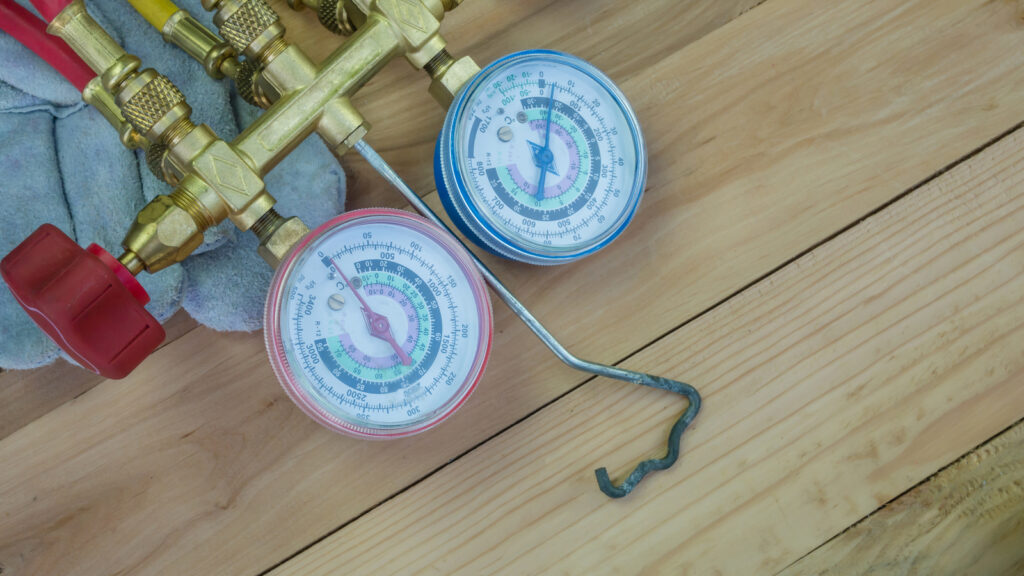Picking the Perfect Heating, Ventilation, and Air Conditioning Professional for Your Refrigerant Recharge

The process of refrigerant recharge, a crucial aspect of maintaining an efficiently operating HVAC system, involves restoring the refrigerant to its appropriate level, which is vital for the effective functioning of air conditioners, refrigerators, and other cooling equipment. The refrigerant, a chemical compound that transitions between liquid and gas states within the HVAC system, is responsible for absorbing heat from the environment and expelling it elsewhere, thus providing the desired cooling effect. Over time, systems may experience a gradual depletion or leakage of refrigerant, leading to a decline in cooling efficiency, higher energy consumption, and potential damage to the compressor, which underscores the importance of a recharge to uphold performance and prevent costly repairs or system breakdowns.
Refrigerant Recharge in Winnipeg, R3R
The recharge process must align with stringent environmental guidelines, especially those pertaining to the handling of certain refrigerants like HCFC-22 (also known as R-22), which has been phased out due to its ozone-depleting properties, in favor of more eco-friendly alternatives like HFCs (hydrofluorocarbons) and HFOs (hydrofluoroolefins). Certified technicians follow a specific set of protocols to conduct a refrigerant recharge; the system will be switched off and connected to a set of reliable gauges to measure pressure and ensure accurate refrigerant levels. Depending on the situation, the technician may evacuate the remainder of the existing refrigerant to repair leaks, followed by a vacuuming of the system to remove moisture and air, which could impair the system’s functioning and potentially introduce contaminants that degrade the refrigerant’s performance. After ensuring the system integrity, the technician introduces the new refrigerant carefully, often relying on precision digital scales to gauge the exact amount required, since overcharging or undercharging can equally lead to system inefficiency and damage, highlighting the necessity for professional expertise.
This entire process must be in strict adherence to the manufacturer’s specifications and the Environmental Protection Agency’s (EPA) regulations, and there’s a strong expectation for technicians to ensure that the system does not release any refrigerant into the atmosphere, both during and after the recharge process. Additionally, periodic check-ups, possibly coupled with a recharge, can serve as preventive maintenance that potentially extends the lifespan of the cooling system and maintains its eco-friendly operations by ensuring that it does not consume excess power due to reduced efficiency. As environmental consciousness grows, there’s an increasing push for systems that use refrigerants with lower Global Warming Potential (GWP), thus requiring industry professionals to stay abreast with the latest developments and transition towards refrigerants and techniques that align with sustainability goals.
In commercial settings, where large-scale HVAC systems are the norm, the process of a refrigerant recharge becomes even more intricate due to the complexity and size of the systems in question. In such cases, detailed planning and execution are imperative to minimize system downtime, which could have a significant impact on business operations. Furthermore, adhering to the correct refrigerant recharge procedure ensures compliance with safety standards, which is indispensable in these environments both for the protection of the technicians and the occupants of the commercial structures.
Optimal refrigerant levels are also critical in industries where precision cooling is demanded, such as in data centers, healthcare facilities, and laboratory settings. In these environments, a refrigerant recharge is not a mere maintenance task but a crucial procedure that could potentially have far-reaching implications on the reliability of critical systems and the preservation of high-value equipment or products, such as medical samples that require stringent temperature control. Professionals operating in these sectors are often equipped with advanced diagnostic tools that provide real-time analytics on system performance, enabling proactive interventions that include refrigerant recharges to prevent unexpected system failures.
HVAC Training
Educational institutions and training centers that instruct future HVAC technicians are now emphasizing the significance of proper refrigerant management, due to its intersection with environmental stewardship and the increasing legislative focus on climate change. This education includes comprehensive training on the operation of refrigerant recovery and recycles stations, which are part of the recharge process, permitting the reclamation and reutilization of refrigerants, thus contributing to more sustainable practices.
It is clear that a refrigerant recharge is a multifaceted process, embedded within the broader context of HVAC system maintenance, environment conservation, and adherence to regulation. Whether performed as part of scheduled maintenance to ensure continuous optimal system performance, or as a corrective measure in response to diminished cooling effects or detected leaks, the process must be carried out methodically and professionally. Technicians administering the refrigerant recharge must do so with both expertise and a sense of responsibility, recognizing the direct impact their work has on energy consumption patterns, operational efficiency, and the overarching effort to mitigate negative environmental impacts.
Struggling to beat the heat in Winnipeg, R3R? It might be time for a refrigerant recharge! Abundant Air Inc offers professional refrigerant recharge services to ensure your AC system operates at its best. Don’t let a lack of refrigerant leave you sweating – contact us now to schedule your recharge appointment and keep your home comfortably cool all summer long. Trust Abundant Air Inc to keep you chill when it matters most!
Information About Winnipeg
Winnipeg, the vibrant capital city of Manitoba, is a captivating blend of cultural diversity, rich history, and economic vitality, with R3R—a postal code area located in the southwestern part of the city—exemplifying these characteristics with its unique offerings. This postal zone encompasses neighborhoods such as Charleswood and Assiniboine Park, areas where residents enjoy a high quality of life amidst lush green spaces and well-planned residential communities. Assiniboine Park, one of Winnipeg’s largest and most treasured public spaces, is a hub for recreation and leisure, featuring the acclaimed Assiniboine Park Zoo, the Assiniboine Park Conservatory, and the diverse, verdant Assiniboine Forest. The area takes pride in its educational institutions, like the University of Winnipeg and various public and private schools, reflecting the community’s commitment to fostering academic excellence and innovation.
Winnipeg
The economic landscape within R3R is equally robust, with businesses ranging from family-owned shops to large corporations, reflecting a healthy, mixed economy that thrives on local support and entrepreneurial spirit. Transport links, including the Perimeter Highway, allow for efficient connectivity to the greater Winnipeg area and beyond, facilitating commerce and daily commutes. Moreover, the development of community centers and public services underscores Winnipeg’s dedication to improving the quality of life for its residents, while ensuring that the unique needs of those within the R3R area are met. As Winnipeg continues to grow and diversify, R3R remains a testament to the city’s ability to harmonize natural beauty with urban progress, creating a desirable destination for both residents and businesses alike.

